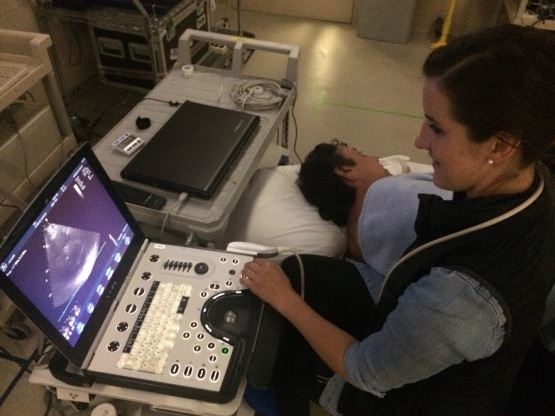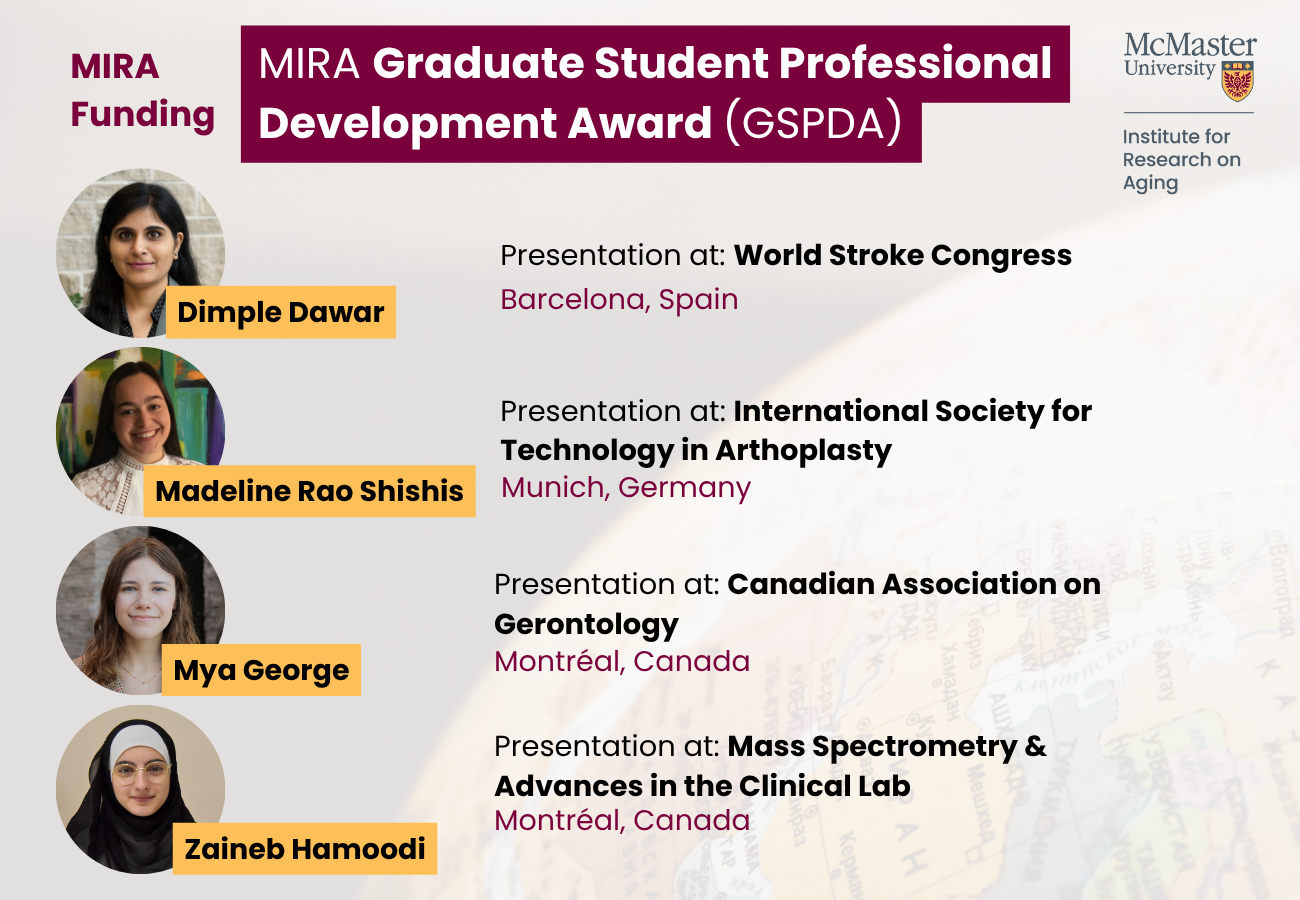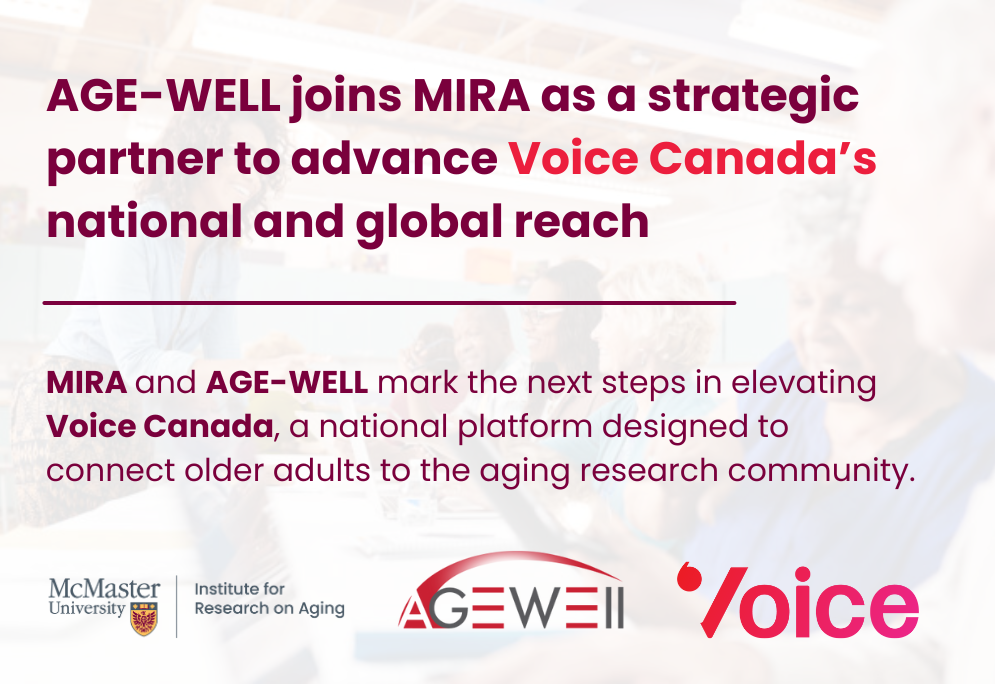
Published: ​October 5, 2018 | By Alexis Bullock
Sydney Valentino is a second year Master’s student in the Vascular Dynamics Laboratory working under the supervision of Dr. Maureen MacDonald. During this interview, Sydney spoke to us about her research investigating the efficacy of high-intensity stair-climbing as an alternative to traditional moderate-intensity aerobic exercise on cardiac rehabilitation patients. Find out more about how Sydney is trying to help cardiac rehabilitation patients recover with stair climbing and her experiences thus far with aging research.
Q: Can you tell us about your research and how it relates to the aging population?
A: The Stair Climbing Outcomes in cardiac Rehabilitation Exercise (SCORE) trial is designed to assess cardiovascular and skeletal muscle adaptations in individuals with coronary heart disease undergoing cardiac rehabilitation at the Cardiac Health and Rehabilitation Centre at the Hamilton General. This study is a 2-arm randomized control trial examining the benefits of traditional moderate-intensity aerobic exercise (TRAD) in comparison to stair climbing-based high-intensity interval training (HIIT) over a three-month period. The purpose of my Master’s research is to examine changes in the cardiac structure and function of the participants enrolled within the SCORE trial following four weeks and three months of rehabilitation exercise. Additionally, SCORE will quantify self-efficacy, exercise enjoyment, and falls incidence of the HIIT program. The relevance of this research is shown in the stats, right on the Heart and Stroke website: One in every twelve Canadians is living with heart disease and by the age of 65, it is the leading cause of death. Finding alternatives to exercise is important to maintain the health and fitness of these individuals, to reduce rates of mortality due to coronary heart disease in Canada and the rest of the world.

Q: Are you expecting HIIT to be equally as effective or more effective than moderate-intensity endurance training in terms of the cardiovascular adaptations?
A: Well, Dr. MacDonald laid down the foundation in 2014, with a study comparing the arterial adaptations from high-intensity interval training to the traditional mode of cardiac rehabilitation, which is moderate-intensity continuous training. The study concluded they were equally as effective at improving the ability of the artery to dilate and increases in peak exercise capacity. This is confirmed by many other studies that use the stationary bicycle as the type of training equipment to conduct the high-intensity interval training. For my Master’s research, I am a part of a study that introduces stair climbing as the mode of high-intensity training instead of using a stationary bicycle. Stair climbing is more practical as many people know of a generic 12-stair staircase, which is all one would need to do the exercise we are proposing. We hope that the high intensities reached by climbing stairs will elicit a similar response as the moderate-intensity continuous training.

Q: How can this research/knowledge be applied to have real-world impact?
A: Individuals that engage in exercise after having a cardiac event have a much higher rate of recovery, lower mortality, less reoccurrence of heart attacks, and overall higher quality of life. After three months of cardiac rehabilitation exercise, these benefits are better maintained if the exercise is adhered to long after the cardiac rehabilitation program has ended, which is why cardiac rehabilitation is called a lifestyle modification program. If our research can provide these individuals with an alternative that is time-efficient, does not require travelling to a gym, and uses self-paced intensity, we think they might enjoy it more and adhere to it longer. It doesn’t have to replace traditional modes of endurance-based exercise, but it can be another tool in the toolbox to maintain health and fitness.
Q: How did you become interested in research on the aging population?
A: The main focus of the Vascular Dynamics Research Laboratory is the study of the cardiovascular system, the blood flow patterns and how this effects the mechanics of the blood vessels. Often these messages have a deep scientific focus, with ability to relate the mechanisms to how cardiovascular disease develops. At the start of my Master’s project, I was really interested in how some of our knowledge of these mechanisms translated to people with cardiovascular disease, rather than the development of the disease. Since cardiovascular disease is more prominent at the later stages of life, aging goes hand-in-hand with these mechanisms. On a more personal note, there is a history of cardiovascular disease on both sides of my family. Most recently, my grandpa suffered from two heart attacks so I have been extremely motivated to not only study the mechanisms, but also to understand the rehabilitation process to help him.
Q: What were some of the highlights of working with older adults in your field?
A: A heart attack can come when you least expect it, which becomes unexpected visits to the hospital and a whirlwind of doctor’s appointment. When we meet these individuals, they are in phase II of cardiac rehabilitation, which means they no longer have to stay in the hospital, but they still need to visit the hospital quite often. Dr. Emily Dunford, the postdoctoral fellow in my lab, and I really enjoy taking the time to explain all the measures we incorporate and take a keen interest in teaching them about what all these numbers mean. We often get into in-depth conversation during long testing visits and get to know the SCORE participants quite well after three months. I learn so much from all the individuals we interact with and they are always so kind in their messages about how we impacted their journey. I couldn’t have anticipated this research would be so fulfilling.

Q: Give us a tweet or take-home message on your research and its impact.
A: Exercise is a key component to becoming your healthiest self after a heart attack. Find an exercise you enjoy to maintain a healthy heart.
Contact Sydney at valens@mcmaster.ca for more information on her exciting research!
This blog post was first published by the MIRA Trainee Network. Read the ​original article.​

